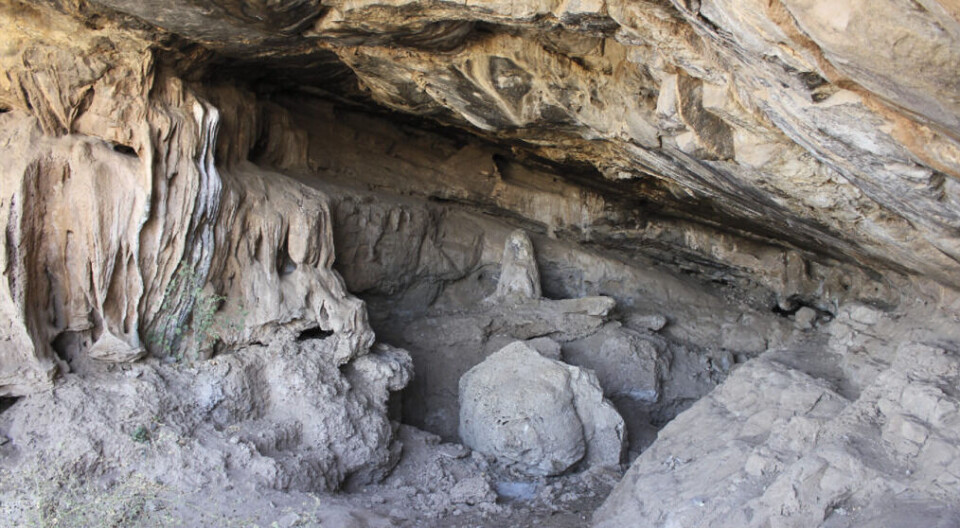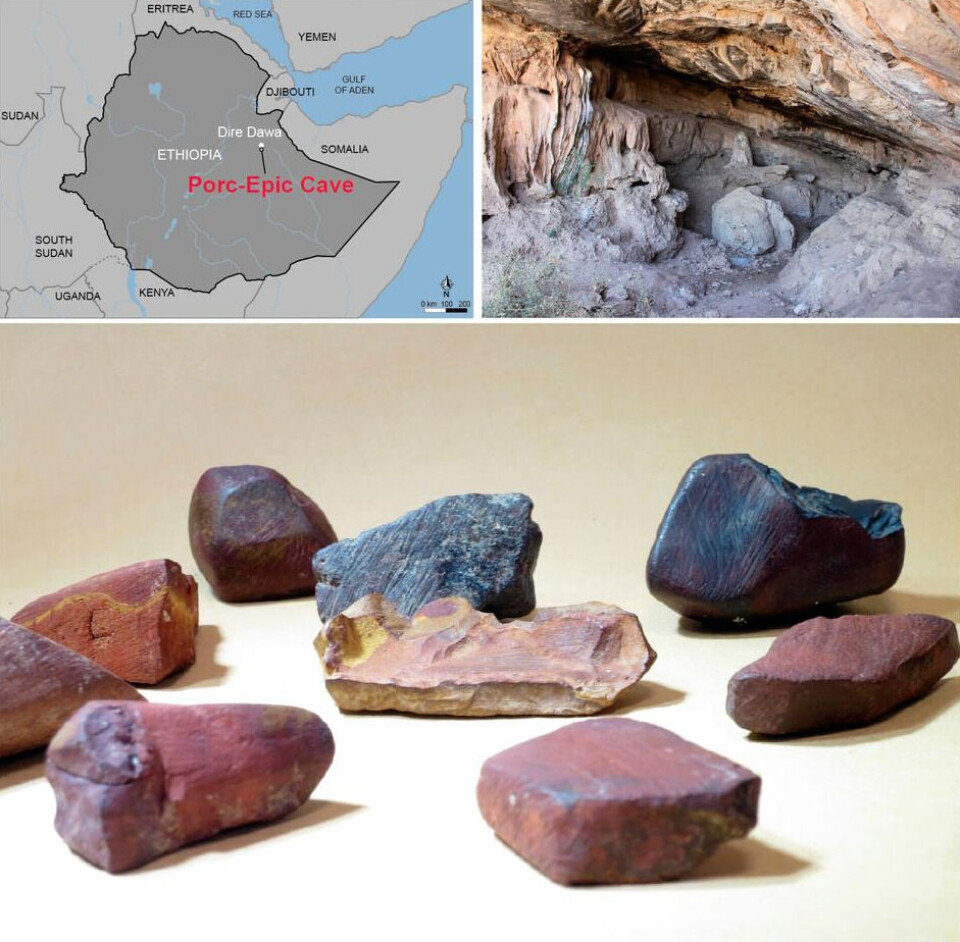THIS CONTENT IS BROUGHT TO YOU BY the University of Bergen - read more

What can this cave in Ethiopia tell us about early human cultural evolution?
A research team has analysed the largest known collection of Middle Stone Age ochre to learn how its use changed over 4,500 years.
The new study, published in Scientific Reports, was conducted by a team of researchers from Norway, Spain, and France.
Together, they analysed the largest known collection of red and yellow mineral pigment fragments, commonly called ochre, dated to the Middle Stone Age. These were found in the Porc-Epic Cave in Ethiopia.
Their study shows that human groups visiting this site have gradually modified the techniques used to produce pigments, adapting to cultural or environmental changes that reduced their access to quality raw materials.
Innovative cultural traits
SapienCE’s Francesco d’Errico says the new study is instrumental to understand the persistent and constantly evolving use of ochre 40,000 years ago in Ethiopia.
“Discoveries documenting the emergence of behavioural modernity in Africa have revealed that innovative cultural traits emerge in this continent at different times and in different regions," he says.
However, ancient sites that yielded archaeological collections large enough to precisely trace how these minerals were acquired, processed and used are rare, according to the researcher.
"Porc-Epic cave is, in this respect, a remarkable exception,” he says.

A key element in cultural development
“In order to understand the mechanisms and processes that have led to the development of modern cultures, we need to document and compare cultural trajectories in different regions," d’Errico explains.
Porc-Epic Cave features the largest African collection of ochre dated to the Middle Stone Age in a region with few sites providing information on this key behavioural innovation.

“The findings from Porc-Epic therefore represent a unique opportunity for comparison with other African records,” d’Errico says.
Adapting technology to climate change
The Porc-Epic Cave in Ethiopia, which is around 40,000 years old, is one of the few Paleolithic/ancient sites with a long, detailed history of ochre use, spanning a period of at least 4,500 years.
More than 40 kg of ochre (4,213 pieces), 21 ochre processing tools, and two ochre-stained artefacts were found during the excavation of the site.
By analysing the chemical composition of ochre pieces found at the site and natural ochre from the cave’s surroundings, and studying the techniques used to process these rocks, the researchers unveil how Middle Stone Age inhabitants of the cave exploited mineral resources.
“Results show that they were able to predict the properties of different ochre types accessible in their environment, and gradually adapt their technology to changes in the availability of raw materials,” d’Errico says.
Emergence and evolution of complex cultures
d'Errico explains that a wide variety of ochre types were collected and brought to the site to produce ochre powder of different textures and shades, probably adapted to different symbolic or functional activities.
However, the ubiquitous presence of red ochre, rich in hematite, throughout the occupations of the site, indicates that Porc-Epic inhabitants were specifically interested in this particular colour and mineral when collecting ochre pieces in the environment, or exchanging them with neighbouring populations.
“The study of the Porc-Epic ochre record indicates the production of mineral pigment was deeply rooted in late East African Middle Stone Age societies, but was also in constant evolution, during a period essential to our understanding of the emergence and evolution of complex cultures,” d’Errico says.
Reference:
Rosso, et al. First identification of an evolving Middle Stone Age ochre culture at Porc-Epic Cave, Ethiopia, Scientific Reports, vol. 13, 2023. DOI: 10.1038/s41598-023-39957-y

This content is paid for and presented by the University of Bergen
This content is created by the University of Bergen's communication staff, who use this platform to communicate science and share results from research with the public. The University of Bergen is one of more than 80 owners of ScienceNorway.no. Read more here.
More content from the University of Bergen:
-
Researcher: Politicians fuel conflicts, but fail to quell them
-
The West influenced the Marshall Islands: "They ended up creating more inequality"
-
Banned gases reveal the age of water
-
Researchers discovered extreme hot springs under the Arctic
-
Tiny particles unlock vinegar’s hidden healing potential
-
“Why doesn't it rain more?” asks researcher




































